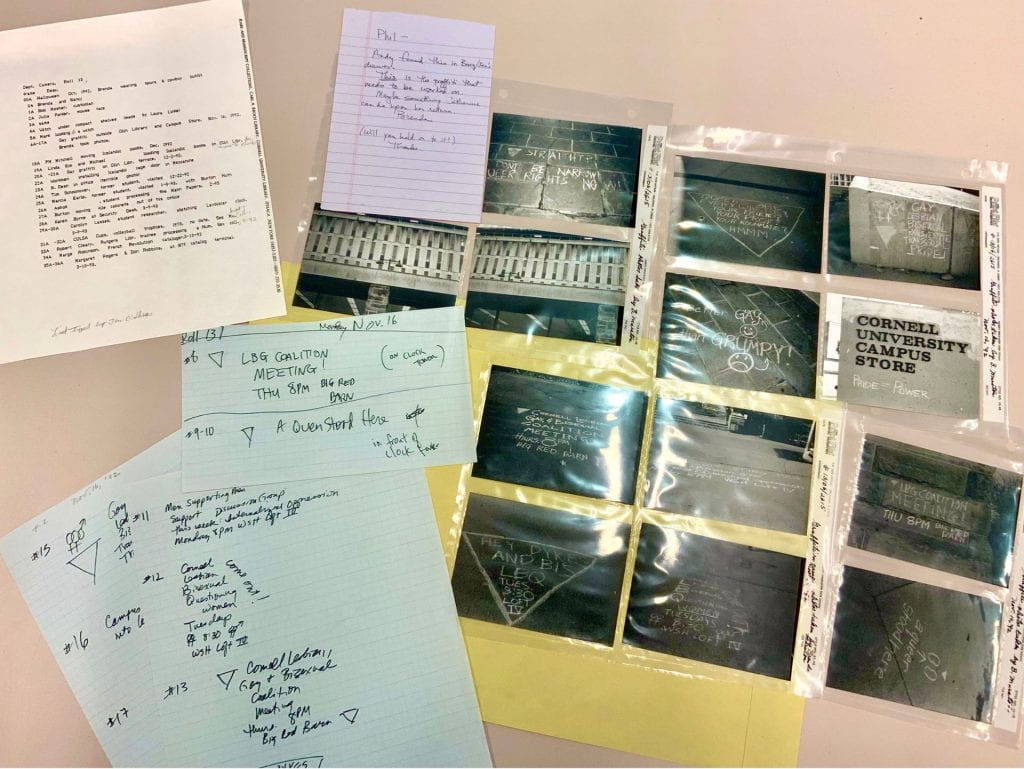by Daniela Wise-Rojas, Class of 2025
These photographs and records from the early 1990s document graffiti found on Cornell’s campus -created by members of Cornell’s Lesbian, Gay, and Bisexual Coalition. They also reveal a growing student body that prioritized the well-being of LGBTQ students on campus over keeping Cornell’s campus free of controversy. Students made their voices heard with statements like an arrow with footprints alongside words, “A QUEER STOOD HERE,” “PRIDE = POWER,” and “BETTER GAY THAN GRUMPY.” There is also a consistent use of the pink triangle, referencing the “Silence = Death” emblem created by HIV/AIDS activists in 1986. Avram Finkelstein, one of the creators of the emblem, emphasized that “the tagline was crafted to be provocative and alarming,” along with being a “trojan horse” that “stimulate[s] curiosity and questions.” Much like pro-gay graffiti was used to take back power, the pink triangle is a flipped version of the patch that Nazis used to identify gay people in concentration camps.

This graffiti was displayed during “Gaypril,” a month dedicated to LGBT students. Having National Pride Month in June doesn’t allow most LGBTQ+ students to have a month away from home to find community on campus. Starting with “May Gay” in the 1970s and 80s, evolving into “Gaypril” in the 1990s to fit with a new academic calendar, Cornell has a long history of having a gay month during the academic year. Frequently, graffiti is used in a hateful way to hurt people indirectly. A 1993 article from the The Baltimore Sun details the experience of Cornell student Carla Roland who encountered a message while walking on campus: “1-800-DIE-HOMO”scribbled in chalk on the pavement. People who are part of marginalized communities usually need to find ways to cover this kind of graffiti to feel emotionally and physically safe. Taking the time to write LGBTQ affirming graffiti in predominantly white and heterosexual spaces like Cornell takes back the power that queer people in most communities lost.
Sources
Associated Press/The Baltimore Sun. “Cornell Split Over Proposal for Gay Dorm.” The Baltimore Sun, March 25m 1993.
Finkelstein, Avram. “SILENCE = DEATH: How an Iconic Protest Poster Came Into Being.” Literary Hub, 01 December 2017.
Stell, Liz. “Gaypril.” Mapping Cornell’s Queer History, GitHub, 07 July 2020.
